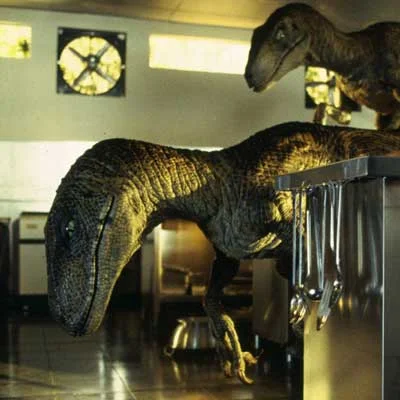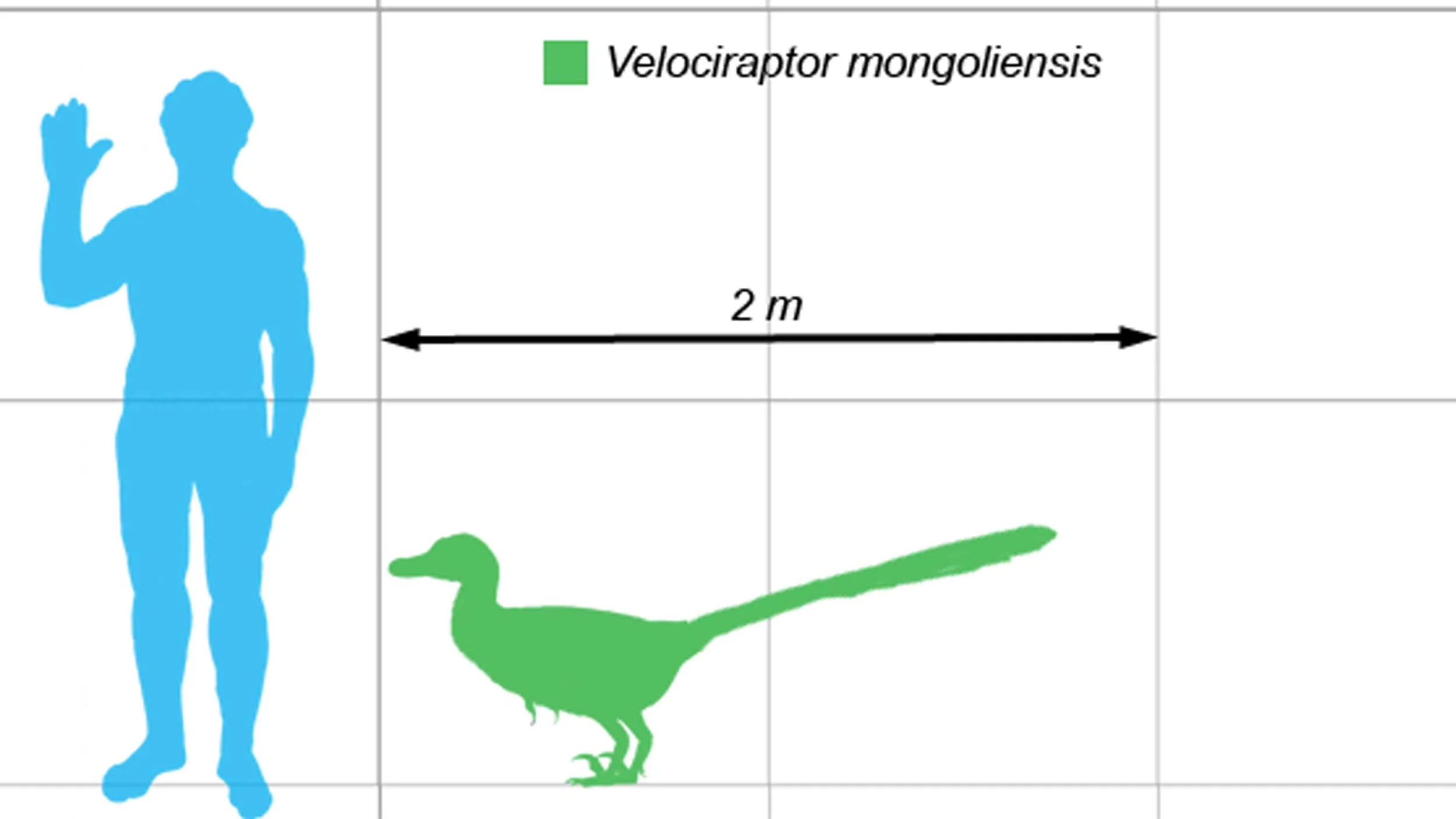Clever Girl – The Jurassic Park Velociraptor Debate
Andrea Duffie
In 1993, a certain dinosaur movie made by Stephen Spielberg hit the big screen and changed my life forever. I was already intrigued by dinosaurs at the time, but Jurassic Park took that fascination to another level.
Yet there was one aspect of the movie that my 8-year old self refused to accept. A serious injustice had been committed because – as I was constantly telling my parents for the next three weeks – "Those dinosaurs weren't velociraptors! They were deinonychus!"
And while further advances in paleontology have proven that I wasn't exactly right, my assessment wasn't exactly wrong either.
WHAT IS A VELOCIRAPTOR?
This is not a velociraptor. It's a Deinonychus, a Velociraptor cousin, displayed in the Houston Museum of Natural Science.
This is also not a velociraptor, according to science. (Courtesy Universal Pictures.)
Velociraptors are part of a family of dinosaurs called Dromaeosauridae. This family shares a few common characteristics:
Deinonychus foot, Houston Museum of Natural Science.
- All Dromaeosauridae are theropods – carnivorous dinosaurs that walked around on two legs (instead of four). Tyrannosaurs are also theropods.
- All Dromaeosauridae had a large, sickle-shaped claw on the second toe of each foot. This claw could be retracted off the ground when walking, and paleontologists think it could have been used as a slashing or stabbing weapon. It might even have been used to help raptors climb things, from trees to larger prey animals.
- Dromaeosauridae had large pubic bones similar to that of modern birds, which project outward beneath the base of their tails. The tails themselves were long and thin, and are thought to have provided a stabilizing counterweight while the animal was jumping or chasing down prey.
- Dromaeosauridae also had feathers...but that's another blog post.
So if Velociraptor and all of these other dinosaurs are in the same family, there can't be THAT many significant differences between them...right?
Well, for starters, actual Velociraptors measured about 6 feet long and 1.5 feet tall – about the height of a modern chicken – so that's a fairly significant difference between real life and movie Velociraptors. Deinonychus, by comparison, was about 11 feet long and 5 feet tall – still a bit smallish, but more true-to-size to the dinosaurs in Jurassic Park.
Side note: Can you imagine if the raptors in the Jurassic Park and Jurassic World movies were chicken-sized? They'd lose so much of their bad-ass awesomeness...and apparently Stephen Spielberg agreed.
Real velociraptors: chicken-sized. (Courtesy of Matt Martyniuk, Wikipedia Commons)
Hollywood velociraptors, not chicken-sized. (Courtesy Universal Pictures.)
SO DID THE DINOSAUR IN JURASSIC PARK REALLY EXIST?
The short answer is yes – the fossil record just hadn't officially caught up with the movie yet.
A little over a year before Jurassic Park began filming in 1992, Dr. James Kirkland and his team unearthed something large in a Utah quarry – a sickle-shaped foot claw almost 9 inches long that belonged to a giant raptor, easily twice the size of any other animal in the family and up to eight times heavier than a Deinonychus. They called it Utahraptor.
In order of largest to smallest: Utahraptor, Deinonychus and Velociraptor. Dude, why are you still standing there waving? RUN! (Image courtesy Matt Martyniuk.)
Dr. Robert Bakker, current curator at the Houston Museum of Natural Science (and my personal Favorite Paleontologist of All Time), served as a consultant to Spielberg's special effects crew on Jurassic Park. In 1993, he recalled the anxiety felt by the movie's special effects artists over creating "a raptor species of a size that had never been documented by a real fossil," and the connection he made to Dr. Kirkland's discovery of Utahraptor:
“‘The claw we’ve got – it’s huge!’ I could hear Jim [Kirkland] jumping up and down at the other end of the line, and I started jumping up and down too, because I knew something he didn’t. ‘Jim, Jim – Jim!’ I yelled. ‘You just found Spielberg’s raptor!’”
"The artists were up to date in their raptor knowledge," Bakker wrote. "They knew that deinonychs were the largest, and that no raptor was bulkier than the average adult male human. Just before Jim [Kirkland] called [with the news of his new claw fossil], I'd listened to one artist complain that Spielberg had invented a raptor that didn't exist. Apparently, Spielberg wasn't happy with the small size of 'real' raptors – he wanted something bigger for his movie. He wanted a raptor twice as big as Deinonychus."
Kirkland and his team soon unearthed hand bones, foot bones, backbone and shinbones of their new specimen. They slowly pieced together a beast that stood over 6 feet tall and 23 feet long.
And with that discovery, one of Hollywood's favorite fictional dinosaurs found an approximate, real-life counterpart in the fossil record shortly after it had already been brought to life on the big screen.







